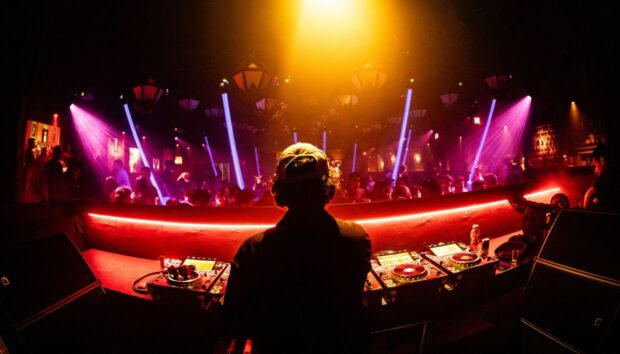
From Jimi Hendrix’s voodoo style to Van Halen’s Brown Sound, through to modern masters like Nita Strauss, great guitarists have great guitar tones. That means they have a guitar sound that’s distinctive, powerful, and effective at communicating their musical message.
Modern music-making tools are a blessing for fans of legendary tone. Using Guitar Rig 7 Pro, you can access countless sought-after guitar and bass amp simulators, studio effects, and pedals with just a few clicks of the mouse. This makes it easier than ever to get a similar sound to the best guitar tones. In this article, we’ll show how you can use Guitar Rig 7 to get a similar sound to some of the greatest guitar tones ever. Perhaps along the way you’ll get inspired to craft your own tone, too.
What makes a good guitar tone?
There is no rule for creating a good guitar tone. Some guitarists, like AC/DC’s Angus Young, have crafted legendary tones with just a guitar and an amp. Others, such as Muse’s Matt Bellamy and Alice Cooper guitarist Nita Strauss, use cutting-edge tech and unusual gear to push the boundaries of how a guitar can sound.
When crafting your own guitar tone, try to keep two things in mind. First: is my tone distinctive? The best tones bear the imprint of their creator, and are instantly recognizable. Second: does my tone convey my musical message? A heavy rock song will require a different tone to a gentle ballad.
In this article, we’ll look at how to get a similar sound to 10 iconic guitar tones using Guitar Rig 7 Pro. Use these examples to get inspiration regarding the kinds of amps, effects, and other modules that can lead to great tone. Then go ahead and create your own great guitar sounds.
How do I get the best guitar sound?
There is no single route to the best guitar sound, but you need a set-up that will allow you to explore and develop top-quality sounds. Guitar Rig 7 makes it easier than ever to create great guitar tones. It’s a near-limitless playground for guitarists, featuring dozens of modeled amps and effects, custom cabinets, presets from legendary guitarists, and much more. Guitar Rig 7 is the perfect tool if you want to shape your tone from the comfort of your home studio. It’s so versatile that it’s also great as a sound design tool for non-guitarists.
How do I find a unique guitar tone?
Finding a unique guitar tone requires inspiration, imagination, and a little luck. You’ll also need a tool that allows you to explore the full range of sounds a guitar can produce. With its countless modules and customizable signal chains, Guitar Rig 7 Pro is perfect for finding a guitar tone that’s unique to you.
How to get iconic guitar tones with Guitar Rig 7 Pro
Let’s take a look at some of the guitar tones you can get inspired by with amps, cabinets, and effects in Guitar Rig 7 Pro.
1. Tom Morello – Rage Against the Machine
On “Killing In The Name Of”, Rage Against The Machine’s Tom Morello shows that just a couple of well-chosen effects can produce a powerful, distinctive guitar tone. Here’s how you might try to create a similar tone to the mighty flanged chords in the song’s intro using Guitar Rig 7.
Morello gets all of his crunch from the amp—there are no additional distortion effects in this chain—so it’s important that we get the amp model right. We’ve gone for the Lead 800 module, which is inspired by the sound of a famous vintage British amplifier that Morello is known to have used. We placed a Stomp Compressor before the amp to thicken up the sound.
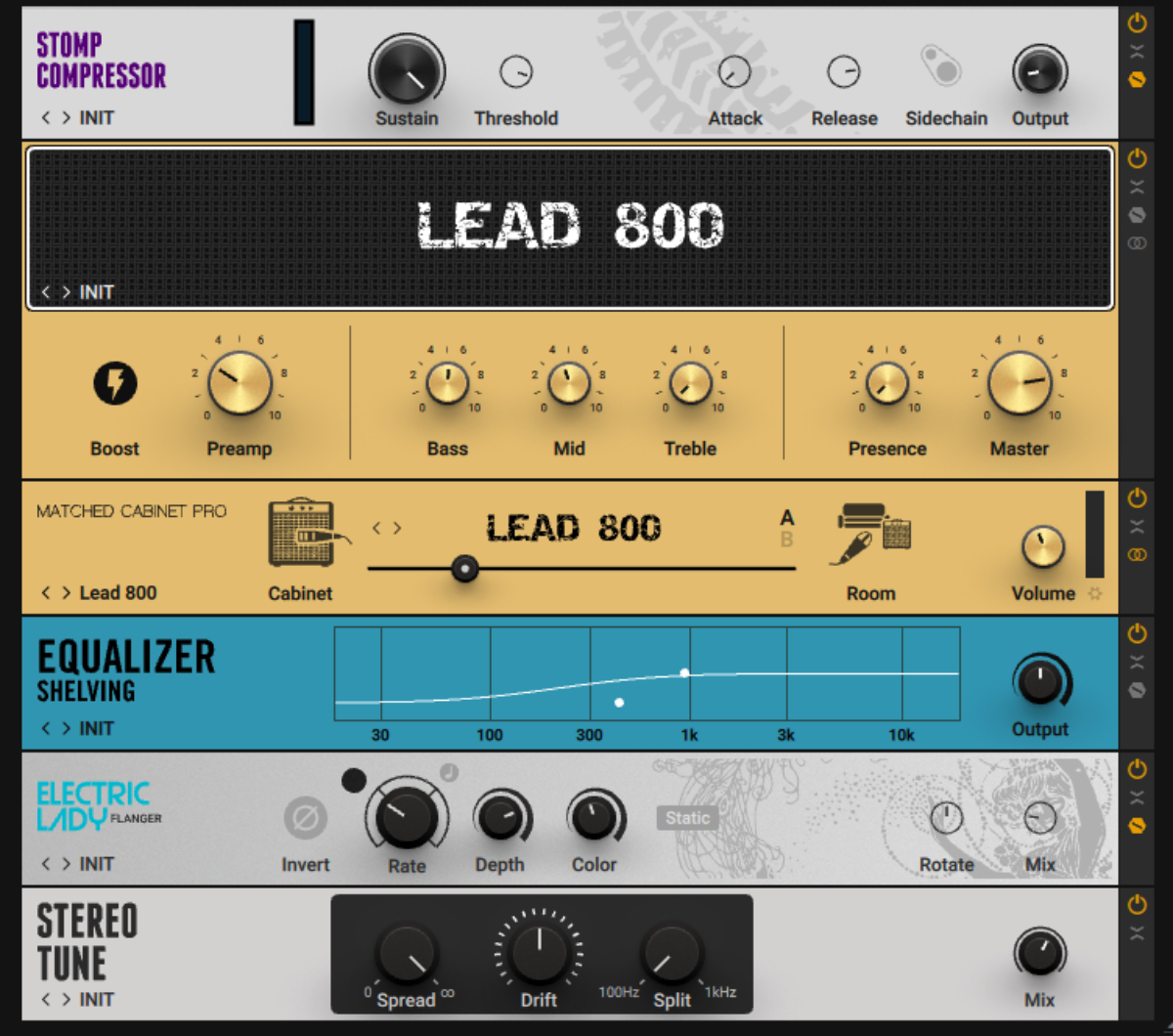
Morello was known for using most of his effects in the FX loop rather than in front of the amp. We’ve placed the effects after the amp in our signal chain. Some Shelving EQ to roll off the lows is followed by the most important part of the chain: the flanger. Electric Lady emulates an all-time classic flange effect and is great for a wide range of sounds, from metallic timbres to extreme “jet engine” whooshes. Dial in a low Rate and high Depth for a dramatic sweep effect. Finally, a little widening will help the chords sound big: we used the Stereo Tune module to broaden out the stereo image.
2. Eddie Van Halen – Van Halen
Eddie Van Halen crafted one of the most unmistakable guitar tones in music history. He called it his “brown sound,” because he wanted a tone that was rich and deep. Let’s look at how you can get inspired by a similar tone to Van Halen’s from the intro to “Ain’t Talkin ‘Bout Love.”
As with Tom Morello, Van Halen’s distortion is achieved by driving an amp hard. We got a good result using the Super Fast 100 module—new in Guitar Rig 7 Pro—which emulates a legendary 100W all-tube amp that’s great for creamy, high-gain sounds. Almost all of the amp’s parameters are cranked to maximum for a full-throated sound.
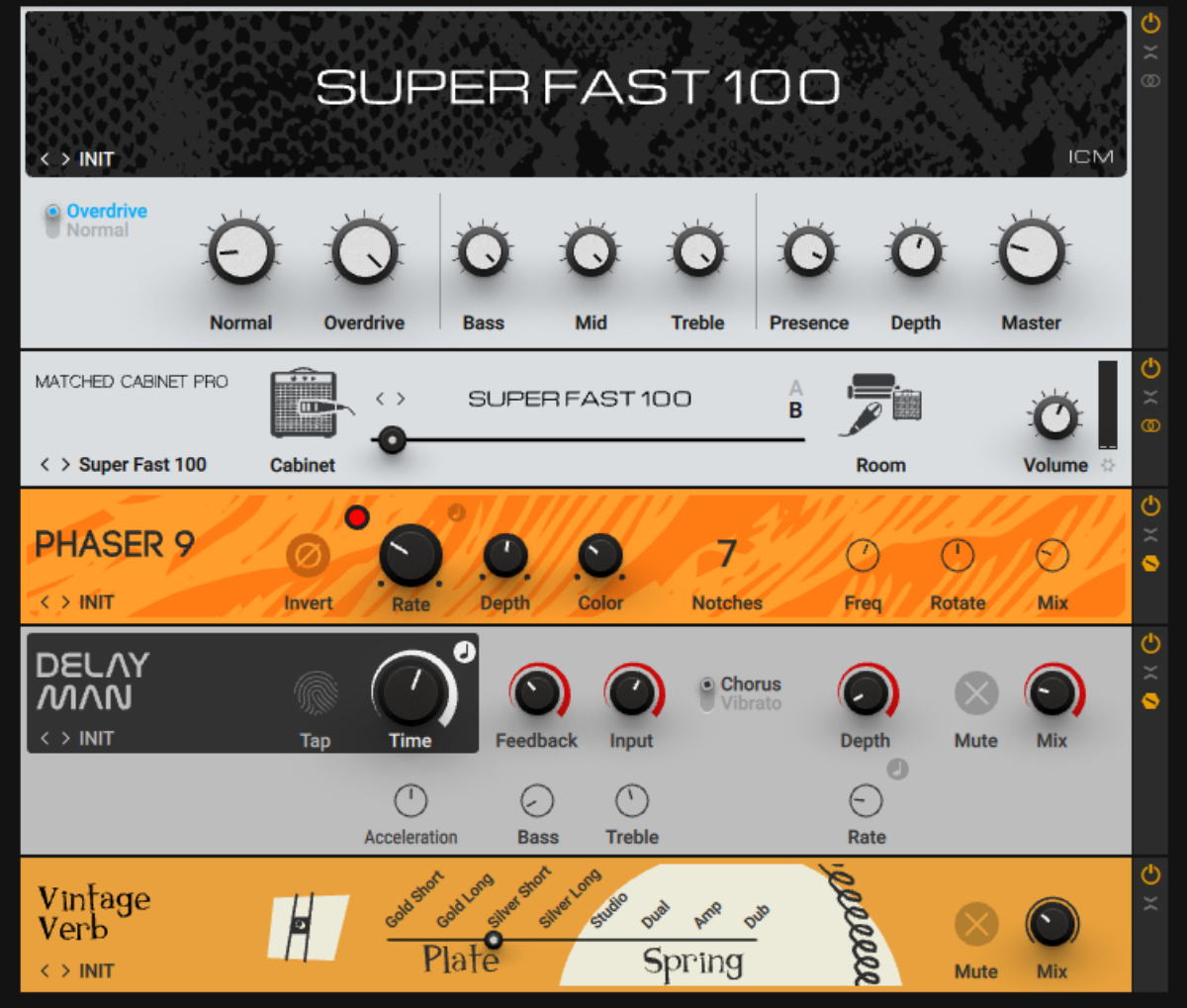
A phase effect adds vital character. We used the Phaser 9 module, which is modeled after a classic phaser unit, to get that unmistakable shimmering sound. Finally, we need plenty of spatial effects to make the guitar sound huge. A mono delay is synced to the tempo for a tight, refined echo (we used the Delay Man module), followed by some reverb. Vintage Verb offers 8 reverb modes that are perfect for recreating classic sounds. “Silver Plate Short” adds just the right amount of sparkle.
3. St. Vincent
St. Vincent has pushed the boundaries of modern guitar tone. She’s used a staggering array of gear over the years, to create anything from classic-sounding tones to futuristic new effects. In the chorus of “Los Ageless,” she relies on a relatively restrained classic tone to complement the track’s punchy electro beat. Let’s look at how you might get a similar tone in Guitar Rig 7 Pro.
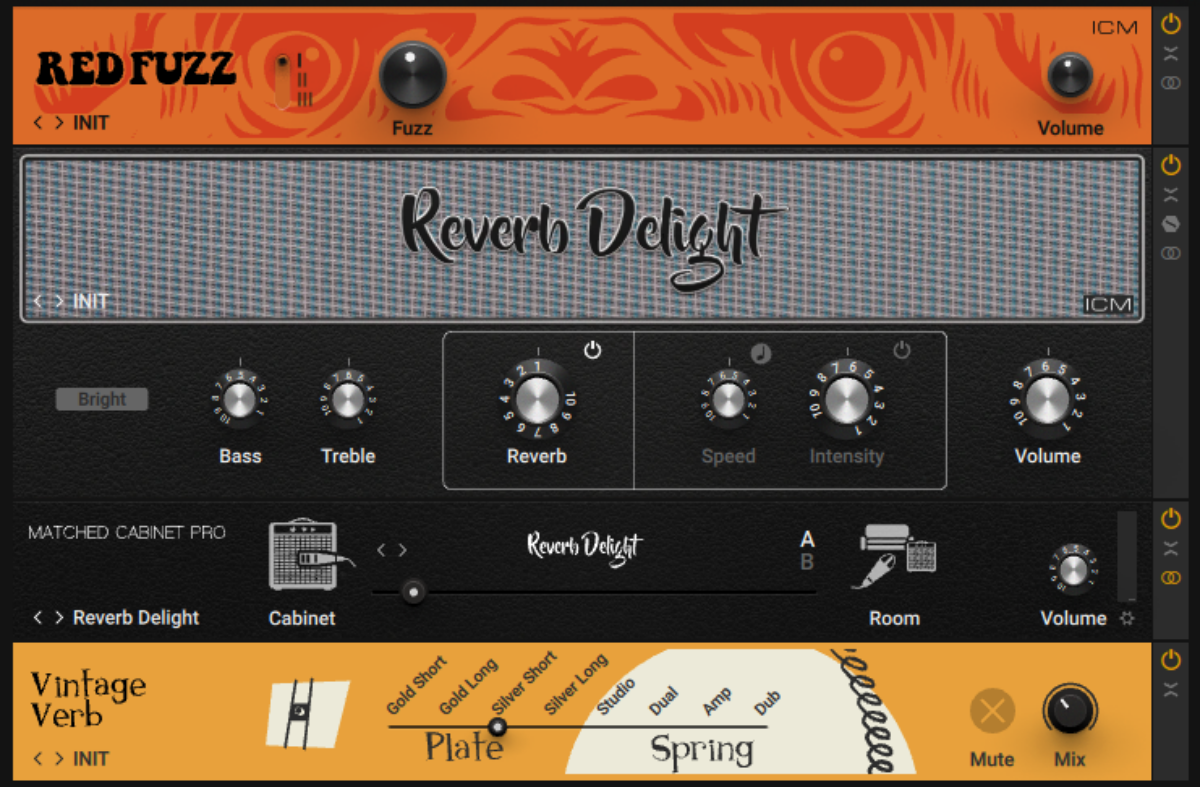
The basis of this tone is a light fuzz effect running into a great-sounding amp. The Red Fuzz module should be your go-to for classic fuzz; mode I gives us the grit and texture we want, with Fuzz set at around 50%. For the amp, we’ve gone for Reverb Delight: a new module in Guitar Rig 7, which models a classic, California-made amp with a rich, clear sound. Finally, a little reverb helps to position the guitar in the mix. The Vintage Verb module gives us authentic results straight out of the gate.
4. Pat Metheny
Pat Metheny is famous for his “synth guitar” tone, which uses a Roland GR-300 Analog Guitar Synthesizer to give his playing an ultra-smooth, synthetic sheen. This tone is heard to great effect in the solo of his 1994 track “The Red One” with John Scofield. Let’s look at how you might get inspired by a similar tone in Guitar Rig 7.
The basics are simple: the Jazz Amp module gives us a nice warm, clean tone. In front of the amp, we used Delay Man to add a ~500 ms echo, mixed low against the dry signal, for a sense of space.
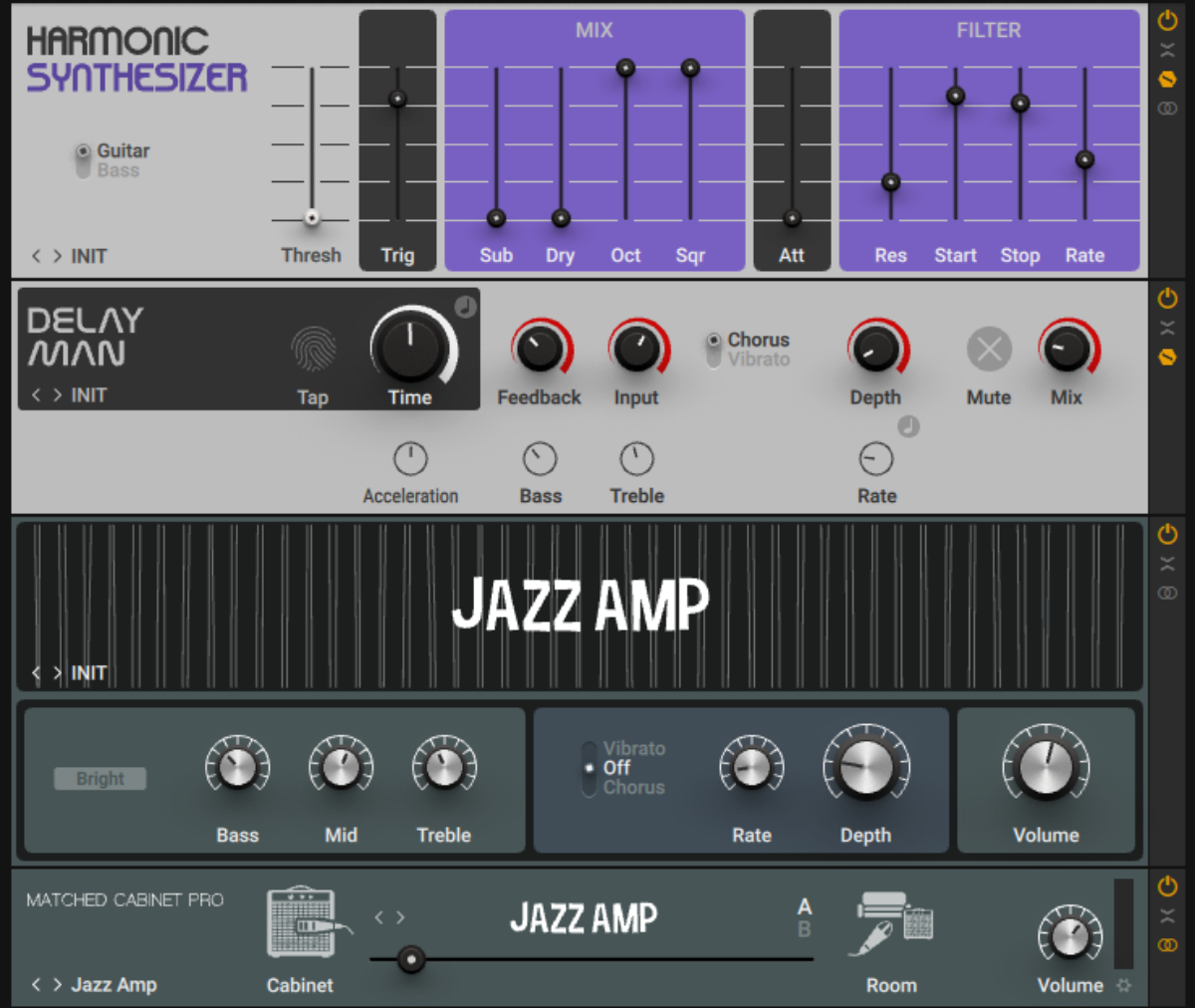
The crucial component is the “guitar synth” effect. We can achieve this using the Harmonic Synthesizer module, which generates classic synthesizer sounds based on the pitch and amplitude of the input signal. To get that smooth Metheny sound, turn the Dry and Sub voices to zero and Octave and Square voices up to maximum. Finally, tweak the filter to remove harshness: that means setting Resonance around the middle, and Start and Stop at around 3-4 kHz.
Let’s add some chorus after the amp. Metheny has been known to do this in an unusual way, using two delayed signal chains in parallel. We can achieve something similar with Guitar Rig’s Split Mix tool, which splits the signal into two parallel chains. Pan the L and R chains hard left and right for maximum width. Using the Replika delay module, apply a 15 ms delay to one channel and a 25 ms delay to the other. Set the Mix at 50% so that the delayed and dry signals blend together. Finally, some subtle hall reverb from RC 48 will give us an open, airy sound.
5. Jimi Hendrix
Jimi Hendrix was one of the first guitarists to conjure a legendary tone of his own, and that incredible sound is on full display in “Voodoo Child (Slight Return).” Let’s look at how you might get a similar tone to Hendrix’s chunky riff in Guitar Rig 7.
For the amp, we want the sound of a vintage tube amplifier pushed to breaking point. We used the Plex module, which models a vintage British amplifier with a clean sound. Ahead of that, we need some authentic vintage fuzz. The Fuzz module does this in spades, by faithfully capturing the sound of a 1960s fuzz pedal.

Hendrix’s sound on “Voodoo Child” isn’t just about his rig; we should also consider the way the track was recorded and mixed. We can reflect the roominess of the original recording by moving the Room slider on the Cabinet module further to the right. To further enhance the effect, add a little extra reverb: Studio Reverb is a handy go-to module for subtle reverb effects. Finally, a Shelving EQ attenuates the lows to mimic the sharp sound of the original recording.
6. Angus Young – AC/DC
Angus Young’s guitar setup is about as simple as they come: a Gibson SG through a Marshall stack, unadorned by effects. That doesn’t make his tone any less compelling. Let’s look at how you could get a similar tone to the famous lead guitar from AC/DC’s “Back In Black” in Guitar Rig 7.
This time we’ve gone for the Hot Plex amp module, which models a clean vintage sound while adding extra gain for powerful distortion. Mid, Treble, and Presence should be cranked way up for a sharp, arresting sound. As with the Hendrix track, it’s important that we get the space right here. Use the Room slide on the Cabinet to dial in the right amount of roominess; toggle to room B to get a different flavor.

A little EQ gets us closer to the character of the recording. Equalizer Parametric allows us to precisely dial in two boosts, one at 3 kHz and a smaller one at 10 kHz. Finally, a little Vintage Verb places the guitar in an authentic space: a short plate will do the trick.
7. Alex Lifeson – Rush
Alex Lifeson of Rush is famous for his love of effects—particularly modulation effects. In his hands, the likes of chorus and flange open up a world of epic, panoramic riffs. Flanging is key to the tone heard in “Spirit of Radio.” We can easily create a similar tone using Guitar Rig 7, which features 14 modulation effects modules, including multiple flangers.

The versatile Electric Lady module gives us the best results in this case. Set depth fairly high and rate slow for an extreme, sweeping effect. Run the signal into a Plex amp module for an authentic vintage tube tone. Finally, move the Room slider on the cabinet to the right to add some roominess.
8. Nita Strauss
Nita Strauss shows that you don’t need a big, expensive rig to get great guitar tone. On her solo recordings, the Alice Cooper guitarist works direct-to-digital, using software modeling to produce a stunning range of rich, authentic tones. Here’s how to get a similar tone to the epic lead in “Dead Inside” using Guitar Rig 7 Pro.
We’re going for a pristine modern tone, so let’s use the Ultrasonic amp module, which models a contemporary, high-gain sound. For distortion, use Demon, which models the sustained, sharp sound of a distortion pedal commonly used in hard rock. Turn on the handy Scoop feature to attenuate the mid frequencies—a trademark move in modern metal. Between distortion and amp, a Stomp Compressor helps to boost signal level and smooth out dynamics.

After the amp, use EQ to control the low end and slot the guitar into the mix. Parametric EQ lets us scoop out frequencies in a precise way. Finally, we need plenty of spatial effects to heighten the epic feel. We used Replika for a wide, rhythmic delay, with additional space from Studio Reverb.
9. Matt Bellamy – Muse
Matt Bellamy of Muse has used seemingly every guitar setup imaginable over the years—including plenty of custom or unusual gear. But he also knows when to keep things simple. The glam rock sleaze of “Supermassive Black Hole” calls for a rich, unfussy tone. Here’s how to get a similar tone using Guitar Rig 7 Pro.
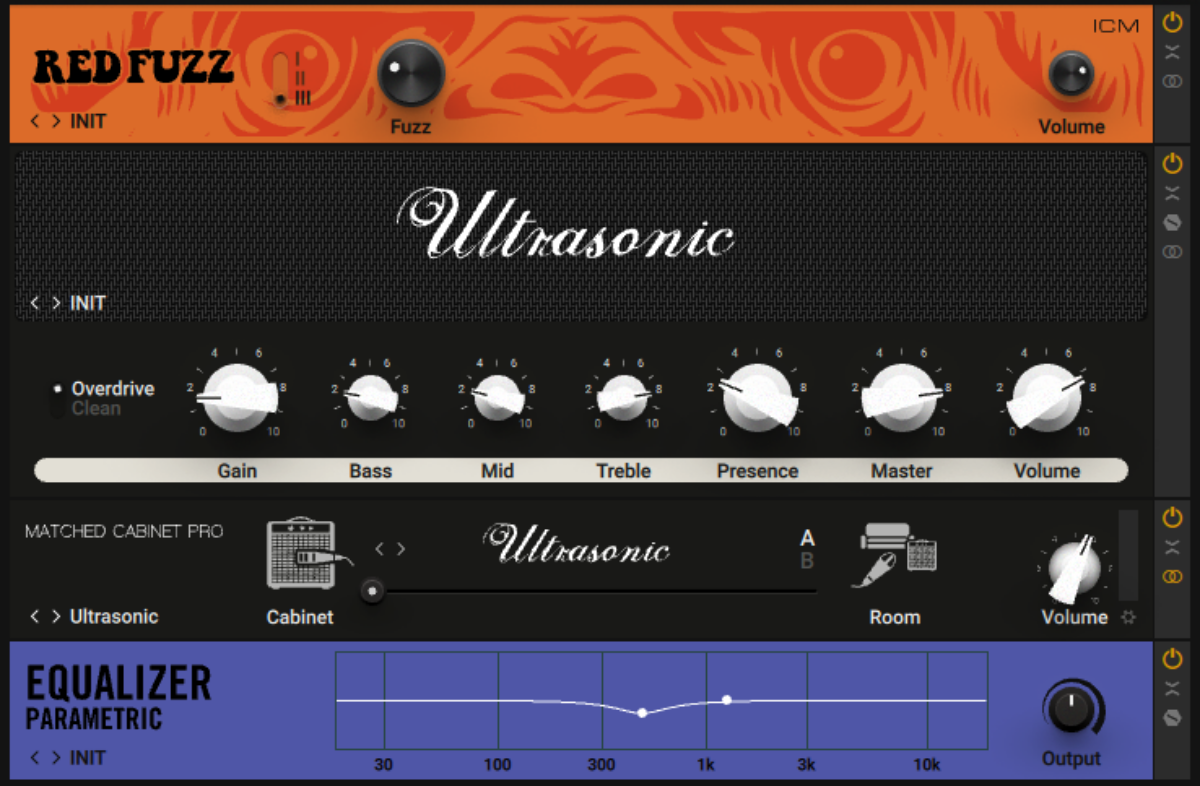
The Ultrasonic amp module works well here, supplying a top-quality contemporary sound. The important part is the fuzz effect running into it. We used the classic Red Fuzz module, in mode III. Balance Fuzz amount and amp Gain for a thick and aggressive but controlled sound. Finally, a little EQ to scoop out the mids will make the sound more modern and precise. Equalizer Parametric, with its visual display, makes this easy to dial in. And that’s it—no reverb required for this punchy, hyper-modern guitar tone.
10. Ichika Nito
Guitar virtuoso Ichika Nito shows that you can do a lot with very little gear. On compositions like “I miss you”, Nito runs his guitar straight into an audio interface for an unadorned tone that highlights the important thing: the incredible skill of his playing. Here’s how to quickly get a similar tone in Guitar Rig 7 Pro.
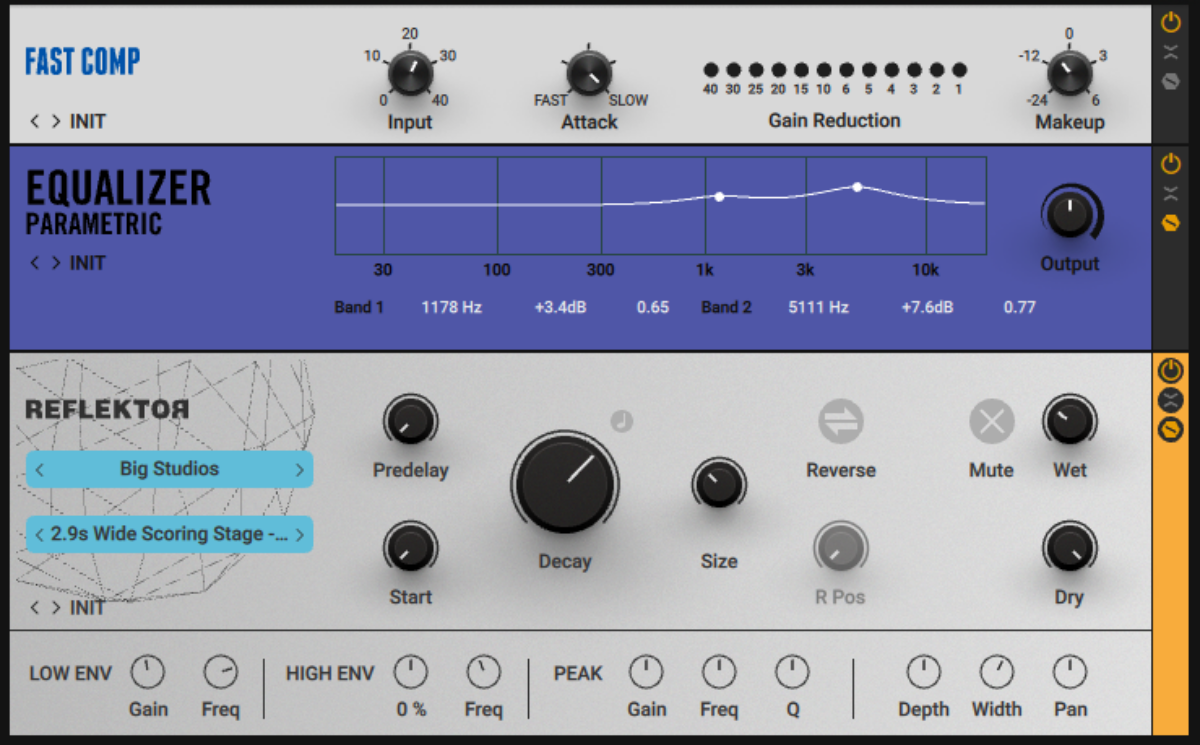
The important thing here is: no amp module! We’re trying to capture the light, transparent sound of a guitar run straight into a sound card. Instead, use compression to catch the peaks caused by Nito-style percussive playing. The Fast Comp module is perfect for this: it’s tuned to quickly respond to transients in a signal. Tweak the input level until you’re getting a few dB of gain reduction.
Next, use Equalizer Parametric to boost the high-mids and highs for a shiny sound. All that’s left to add is some airy reverb. We used the Reflektor module, a sophisticated convolution reverb that allows you to dial in exactly the sound you need. The “Wide Scoring Stage” preset under “Big Studios” gives us just the right breadth and depth.
Start creating iconic guitar sounds
In this article, we’ve looked at great guitar tone: what makes it, and how to get similar tones inspired by your favorite guitarists using Guitar Rig 7 Pro. Now that you’ve studied the legendary guitar tones of some of the greats, you’re ready to start creating your own guitar sounds.
With its comprehensive collection of modeled amps, effects, and other features, Guitar Rig 7 will help you craft any guitar tone you can imagine. And if you’re still looking for even more options, take a look at some of the best electric guitar VSTs from Native Instruments.
Get Guitar Rig 7 Pro















